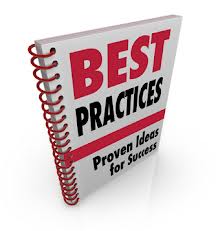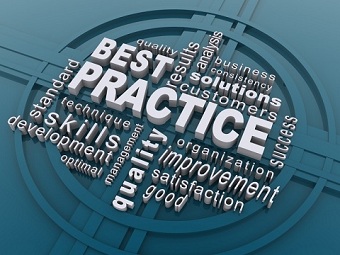Are “Best Practices” a Myth?
 Best practices have essentially become the art of copying everyone else. I believe a better term to use is “smart practice.” It’s time to change the perspective a bit. Investigating “best practices” is good. Seeing what others are doing, and generating ideas about how to do things better can definitely help you achieve greater efficiencies. But be smart and figure out what ideas will work for you. By adopting what makes sense (if anything) you will be way better off as you’ll be improving in a way that is specific to your organization.
Best practices have essentially become the art of copying everyone else. I believe a better term to use is “smart practice.” It’s time to change the perspective a bit. Investigating “best practices” is good. Seeing what others are doing, and generating ideas about how to do things better can definitely help you achieve greater efficiencies. But be smart and figure out what ideas will work for you. By adopting what makes sense (if anything) you will be way better off as you’ll be improving in a way that is specific to your organization.
We are going to post on a number of Best-in-Class or Best Practices as it relates to Facilities Management because –
-
We are always intrigued by what new research is showing us.
-
We like being enlightened and encouraged by ideas from different facilities managers about doing things better.
-
We believe continuous improvement and a continuous learning environment is the healthiest one. This will ensure ongoing competitiveness as well as be more rewarding for employees.
 Let’s give the term “best practice” or “best-in-class” some perspective first. What does it really mean, and how should we look at this term? We’re reflecting on this because they’re buzzwords that are being overused, misused, and sometimes becoming almost dangerous.
Let’s give the term “best practice” or “best-in-class” some perspective first. What does it really mean, and how should we look at this term? We’re reflecting on this because they’re buzzwords that are being overused, misused, and sometimes becoming almost dangerous.
-
Overused: having been around for almost two decades, we hear these buzzwords seemingly everywhere. They’ve become a common business place term that are easy to say, but what is really being said?
-
Misused: to be any good the impression is that it has to be a best practice, where in fact it could be an excuse not to do something. Perfectly good ideas can end up bogged down in disagreement for no rational reason. Instead of suggesting why they disagree the easy out becomes, “well is it a best practice?”
-
Dangerous: because you may be chasing something that doesn’t make sense for your organization. Simply because everyone else is doing it or it’s perceived to be best-in-class or a best practice, stop and ask – “is it really best for you?”
The irony is that if everyone is doing “best practices” then they stand to become “average” practices instead of the “best.” A best practice cannot be done by everyone, yet everyone seems to be chasing them.
This is paradoxical. It becomes a moving target, not a strategy. It’s suggesting that as soon as I catch up to everyone else doing best practices, a new and better practice is established. You’re putting yourself on a mindless treadmill where you’re constantly chasing the next thing. You’ll be getting carried away by asking if you are using the best practice, to identify best practices?
 It’s OK to get ideas and principles from observing some true best-in-class behaviours. Create a continuous learning and continuous improvement environment that makes it specific to your organization and your people. We would suggest that you may benefit even more by nurturing a mindset for creating new best practices rather than discovering or copying what others are doing. Otherwise, how do you get ahead of your competitors?
It’s OK to get ideas and principles from observing some true best-in-class behaviours. Create a continuous learning and continuous improvement environment that makes it specific to your organization and your people. We would suggest that you may benefit even more by nurturing a mindset for creating new best practices rather than discovering or copying what others are doing. Otherwise, how do you get ahead of your competitors?
While we’ll still call it “best practices” because it’s the common term of reference, we’ll suggest you consider thinking about this as “smart practices.” It’s best figuring out for yourself what’s needed to improve situations unique and specific to you.
